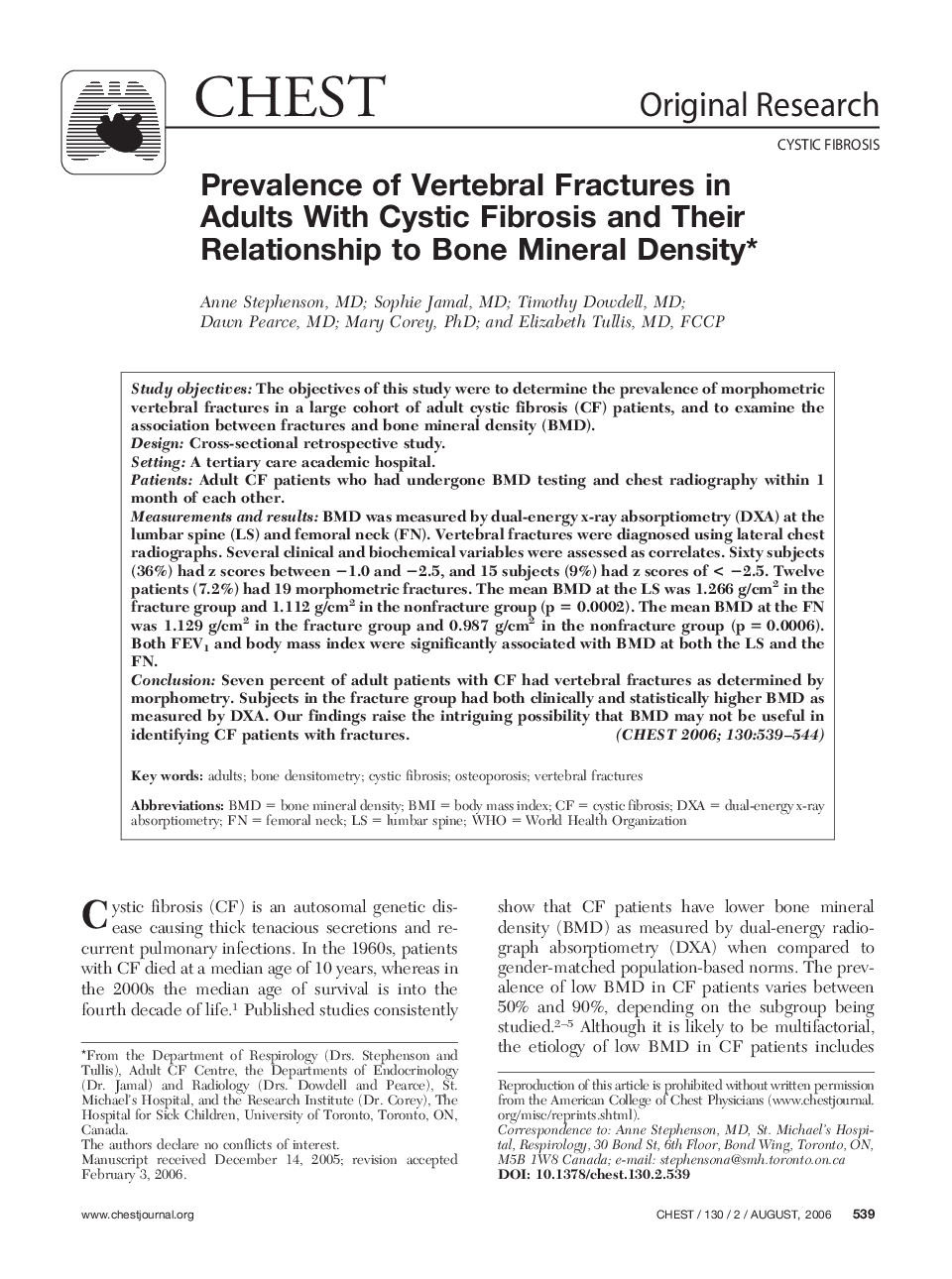| Article ID | Journal | Published Year | Pages | File Type |
|---|---|---|---|---|
| 2905658 | Chest | 2006 | 6 Pages |
Study objectivesThe objectives of this study were to determine the prevalence of morphometric vertebral fractures in a large cohort of adult cystic fibrosis (CF) patients, and to examine the association between fractures and bone mineral density (BMD).DesignCross-sectional retrospective study.SettingA tertiary care academic hospital.PatientsAdult CF patients who had undergone BMD testing and chest radiography within 1 month of each other.Measurements and resultsBMD was measured by dual-energy x-ray absorptiometry (DXA) at the lumbar spine (LS) and femoral neck (FN). Vertebral fractures were diagnosed using lateral chest radiographs. Several clinical and biochemical variables were assessed as correlates. Sixty subjects (36%) had z scores between −1.0 and −2.5, and 15 subjects (9%) had z scores of < −2.5. Twelve patients (7.2%) had 19 morphometric fractures. The mean BMD at the LS was 1.266 g/cm2 in the fracture group and 1.112 g/cm2 in the nonfracture group (p = 0.0002). The mean BMD at the FN was 1.129 g/cm2 in the fracture group and 0.987 g/cm2 in the nonfracture group (p = 0.0006). Both FEV1 and body mass index were significantly associated with BMD at both the LS and the FN.ConclusionSeven percent of adult patients with CF had vertebral fractures as determined by morphometry. Subjects in the fracture group had both clinically and statistically higher BMD as measured by DXA. Our findings raise the intriguing possibility that BMD may not be useful in identifying CF patients with fractures.
